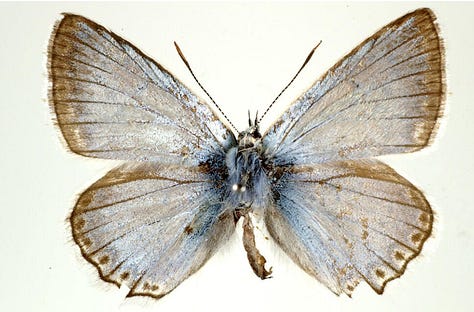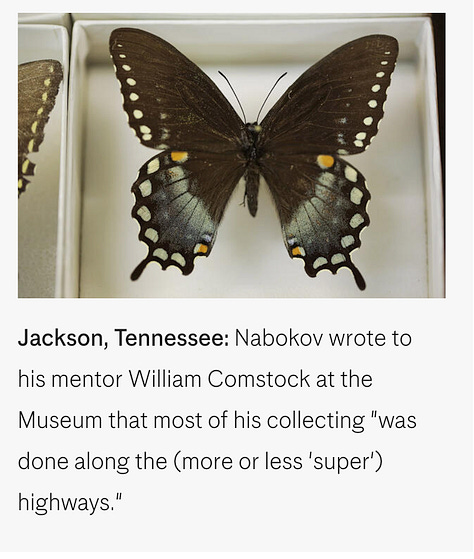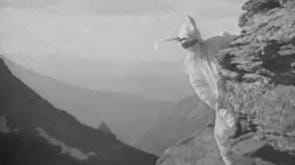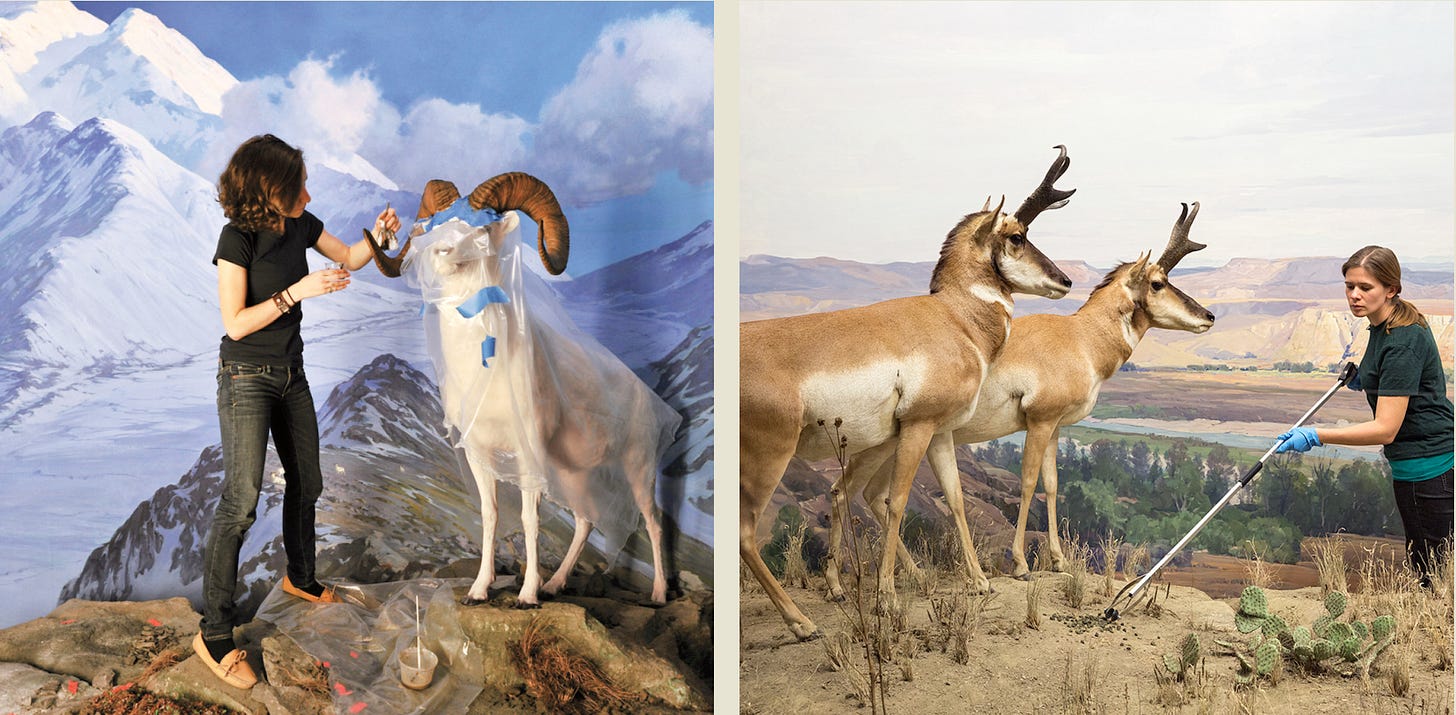Nabokov's Butterflies and Rich Media at New York's Museum of Natural HIstory
Dioramas in the making!
New York’s Museum of Natural History offers one of the richest cross-media experiences of any museum in the world. It possesses so many multimedia assets posted that the Museum’s search engines are having a nervous breakdown. In pre-Internet days the hand-painted dioramas at Museum of Natural History were the closest New York City children could ever get to virtual reality . On any rainy Saturday the Museum's massive halls echoed with the sound of footsteps as children held their parents' hand and stood planted in awe of lions, hippos and other beasts arrayed in front of hand-painted dioramas.
All that has changed. Global visitors can now go online and view videos from the grandiose to mundane, for instance, of the “picket pin " squirrel (incorrectly called a gopher ) nibbling nuts proffered by a early Museum naturalist in the field. In another video guests can view bygone teams with pick axes, brave the snow through rocky passes in search of elusive mountain goats. In one of these delightful vintage videos, a naturalist is dressed up like a mountain goat, while wearing horns and what looks looks like Dr. Denton pajamas as he tries to woo these reclusive beasts who live along the edge of cliff and stone . Virtual visitors transformed into DJs can play an audio game , The Roar Mixer where they can mix T. rex roars while blending sounds from living animals. In another game they can spin Alaskan Brown Bears and bison around with the click and drag motion of a mouse.
Did you that the author of “Lolita”, Vladimir Nabakov, was an ardent collector of butterflies? In a blog post we are told, that soon after moving to the U.S., Nabokov began volunteering in the Lepidoptera collections at the American Museum of Natural History. His first cross-country adventure was in the summer of 1941. Watch this video to learn more. The writer donated many of the butterflies and moths collected on that trip to the Museum.









A multi-video series documents the renovation of some aging dioramas, describing how the three-dimensional foregrounds and two-dimensional background paintings of these marvels were originally created. You can learn all about dioramas at this wonderful Museum of Natural History site,”Talking about Dioramas”. In fact, our nation’s very own 26th president and avid hunter, Teddy Roosevelt, donated a few pelts to the mammalogy collection that some of the stuffed animals in the dioramas are still sporting today.
Ssshh…PETA may find out and post a picket line.
Animals in dioramas stare back blankly at visitors through glassy eyes. It brings us back to the glorious days of exploration where new discoveries were a dime a dozen, and all were filled with wonder.
Museum exhibition specialist Tom Doncourt, describes the dioramas as time capsules, as “ preserving an age of exploration and a way of thinking.” He recalls the first time he entered a diorama to measure chemicals in the air:
“We had to climb a ladder and walk a catwalk that took us above the displays and try and figure out how to get into each one to place a packet that would tell our conservators what chemicals were in the air in each case. I remember lowering myself down a hatch that took me behind a tree in the Mountain Gorilla Group. Your perspective of the space changes dramatically and you realize how huge the dimensions of each display really are.”
Carl Akley was one of the Museum's most gifted diorama artists. He survived a bull elephant charge and a leopard attack during his expeditions. He is said by the Museum to be one of a group of “brilliant, passionate, and sometimes eccentric artists and naturalists” who traveled to the field in search of specimens and landscapes to copy. The Museum’s blog tells us that,
By the time he arrived at the American Museum of Natural History in 1909, Akeley had developed a sculptural technique for taxidermy that became known as the “Akeley method.” His process required taking precise measurements, making plaster impressions, and using bones from a specimen’s skeleton to create lifelike clay sculptures over which skin would be fitted. Akeley’s work elevated the practice from a crude craft to an art form, and his techniques became the basis for modern taxidermy.
Hiroshi Sugimoto, a photographer, is a lucky man indeed. He has spent a career photographing dioramas at New York’s Museum of Natural History … with a view camera no less. Why? Probably to reduce reflections. I’m sure that lighting his stuffed subjects shielded by glass can prove daunting. Check out this video and watch how he changes the angle of his view camera and uses shifts, maybe around 45 degrees, to reduce glare and reflections from the glass window. And remember this on an assignment where you have to photograph through a window : the further you angle the camera, the more likely you are to reduce unwanted glare. Sugimoto also uses diffused side lighting and drapes a dark cloth or blackout material over the camera to prevent external light from reflecting off the window.
Did you know the painted landscapes for the dioramas had to be from real places, not the imagined?
“To gather source material, artists first visited the locale, photographing and painting the site to bring the true colors of the wilderness back to Manhattan. Watch this video for footage from the 1940s of artists at work.”
The Museum’s wealth of multimedia archives are simply overwhelming.
Students whose schools lack funding for field trips can visit the Museum virtually to explore the multitude of rich media experiences available online.
But of course nothing is better than the “real thing”. So if either you are living or visiting New York City, turn off your iPhones, go offline and visit the stately bricks and mortar environment of The Museum of Natural History. Let your imaginations soar as you view their amazing dioramas, stuffed Black Bears and other exhibitions.
The virtual world engages but realia always wins the day.






